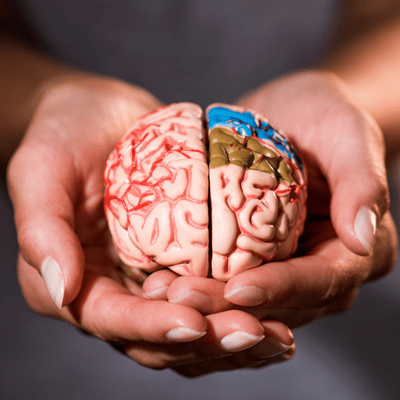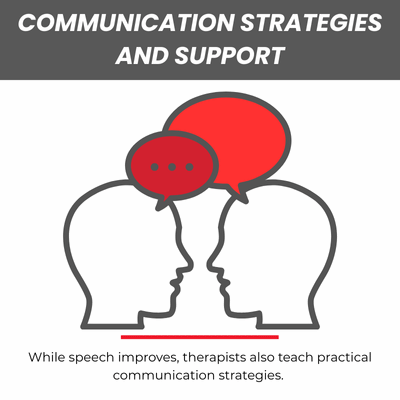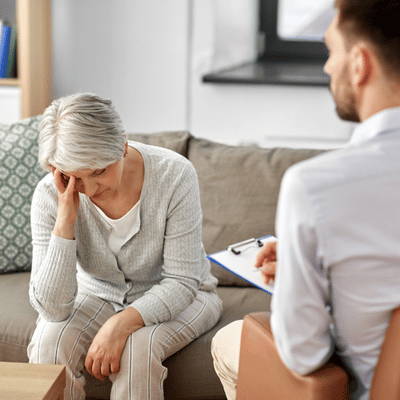
Slurred speech affects more than half of all stroke survivors.
This impediment presents major speech difficulties, impairing daily life and confidence.
The medical term for this condition is dysarthria, which is a motor speaking problem caused by brain damage or nervous system damage.
When a stroke damages areas of the brain that control speech muscles, signals from the brain to the mouth muscles get disrupted. This leads to weak, slow, or uncoordinated speech that sounds slurred or mumbled.
The good news? Speech therapy can help. Working with a speech-language pathologist provides targeted exercises and strategies that take advantage of the brain’s ability to heal and adapt through neuroplasticity.
Understanding Post-Stroke Speech Problems
What Is Dysarthria?
Dysarthria occurs when brain damage affects the muscles needed for speech. A stroke can injure parts of the brain or brainstem that control the lips, tongue, vocal cords, and other speech muscles.
People with dysarthria know what they want to say. But muscle weakness or poor motor coordination makes their speech sound slurred, quiet, or monotone. The condition affects multiple parts of speech production including breathing, voice quality, and articulation.
Brain Areas That Control Speech

Different stroke locations cause different communication difficulties:
Brain damage weakens facial muscles and the tongue muscle, making words hard to pronounce clearly.
Cerebellum strokes disrupt movement coordination. This causes uneven speech rhythm and slurred words. The cerebellum plays a key role in coordinating smooth speech movements.
Basal ganglia damage affects fine motor control of speech muscles. The basal ganglia help coordinate smooth speech movements throughout the nervous system. When stroke affects the basal ganglia, people often develop speech impairment. Damage to the basal ganglia can cause various types of dysarthria. The basal ganglia work with other brain areas to control speech production. Stroke in the basal ganglia disrupts normal speech patterns.
Language centers in the left brain control word finding and grammar. Damage to these language centers can cause both speech difficulties and language problems.
Dysarthria vs Other Speech Conditions
Dysarthria differs from other common post-stroke conditions:
Apraxia of speech affects the brain’s ability to plan speech movements. People with apraxia of speech know what to say but struggle to coordinate the right muscle movements. Their speech often has inconsistent errors and long pauses. Apraxia of speech requires different therapy approaches than dysarthria. Both dysarthria and apraxia of speech can occur together after stroke. Apraxia of speech involves motor planning problems rather than muscle weakness.
Aphasia is a language disorder that affects finding words or understanding speech. Unlike dysarthria, the language centers of the brain are damaged in aphasia.
Both apraxia of speech and dysarthria are motor speech disorders that therapy can help improve.
Impact on Daily Life
Speech difficulties create ripple effects beyond just talking. When speech is unclear, simple conversations become frustrating. Family members may ask for repetition or misunderstand what’s being said.
Research shows that stroke survivors with communication difficulties often experience:
- Social isolation and withdrawal
- Anxiety and depression
- Reduced confidence in speaking situations
- Difficulty returning to work
- Strained personal relationships
Many people with dysarthria also develop swallowing problems called dysphagia. The same brain injury that affects speech muscles can make swallowing unsafe.
These speech difficulties highlight why improving speech clarity is crucial for recovery. Even small gains in speaking skills can dramatically improve quality of life and help survivors reconnect with loved ones.
How Speech Therapy Helps Recovery

Speech therapy forms the foundation of stroke recovery for speech problems. Early intervention works best because the brain shows the highest potential for healing in the first months after stroke.
A speech-language pathologist starts with a thorough assessment. They evaluate muscle strength, breathing support, speech sounds, speech rhythm, and voice quality. They also check for other issues like language skills or thinking difficulties.
Based on this evaluation, the therapist creates individualized treatment plans. The goal is to maximize communication ability through both restorative exercises and communication strategies.
The Science Behind Recovery
Therapy works because of neuroplasticity – the brain’s ability to form new connections and rewire itself. Even after brain damage from stroke, healthy brain areas can take over functions from damaged regions.
Repetitive, targeted practice of speech movements encourages the brain to strengthen new pathways for communication. The nervous system learns to compensate for damaged areas, leading to clearer speech over time.
Neuroplasticity gives hope for speech recovery even months or years after stroke. The nervous system continues adapting with consistent practice. Understanding neuroplasticity helps explain why intensive rehabilitation activities work so well.
Consistent daily practice, even just 15-30 minutes of speech therapy exercises at home, can speed up progress by reinforcing these new neural pathways in the nervous system.
Key Therapy Techniques
Muscle Strengthening and Coordination
Many people start with exercises to strengthen speech muscles. This includes tongue movements, lip exercises, and jaw coordination drills. Breathing exercises improve respiratory support for louder, more sustained speech.
These activities help combat muscle control problems from stroke and improve the motor coordination needed for clear speech production.
Articulation and Sound Practice
Because dysarthria often causes unclear speech sounds, therapists use specific drills to sharpen pronunciation. Patients practice challenging syllables, repeat difficult words, and work on precise tongue and lip movements.
Techniques like exaggerated articulation help “train” the mouth to hit each sound target accurately. Some therapists use mirrors for visual feedback or computer programs that show real-time pronunciation feedback.
Voice Training for Volume and Clarity
Stroke can affect voice by causing low volume, monotone pitch, or harsh vocal quality. Voice therapy techniques help restore normal voice patterns.
One proven approach is Lee Silverman Voice Treatment (LSVT LOUD), which focuses on increasing vocal loudness through high-effort voice exercises. Speaking louder often improves overall intelligibility.
Patients also practise pitch exercises, sustaining vowels at suitable volume levels and restoring natural intonation patterns to make speech more expressive.
Rate and Rhythm Control
Some stroke survivors speak too fast or have irregular speech patterns. Therapists teach pacing strategies like tapping for each syllable or using a metronome to control speaking speed.
Slowing down somewhat and include natural pauses usually increases clarity since speech muscles have more time to reach the optimal positions.
Communication Strategies and Support

While speech improves, therapists also teach practical communication strategies. These include speaking face-to-face, reducing background noise, using gestures, and checking that listeners understand.
Family members learn helpful strategies such as patient listening, observing facial expressions, and seeking clarification when necessary. These communication tactics help to lessen frustration for everybody involved.
Communication Aids
For severe speech impairment, therapists may introduce communication aids. Low-tech options include writing or picture boards. High-tech solutions include speech-generating devices or smartphone apps.
These tools supplement natural speech while recovery continues. Most people reduce their reliance on communication aids as their language skills improve.
Latest Developments in 2025
Modern stroke recovery takes advantage of new technology and research findings. Smartphone apps now provide guided speech exercises at home. A 2024 study found that patients using a therapy app for one hour daily showed better outcomes than standard care alone.
Teletherapy allows stroke survivors to receive expert guidance remotely through video sessions. This helps people who can’t travel easily due to mobility issues.
Researchers are exploring brain stimulation techniques and virtual reality programs to enhance neuroplasticity and make practice more engaging. Artificial intelligence software provides instant feedback on pronunciation and customizes exercises as patients improve.
High-intensity therapy protocols with many hours of practice per week seem to produce better results for speech recovery. Group programs combine speech practice with social interaction and peer support.
There’s also greater focus on long-term support. Stroke survivors may continue improving their language skills years after the initial injury when given ongoing practice opportunities through community groups or tech-based programs.
The nervous system adapts throughout life, meaning improvement is possible even in chronic stroke cases. Modern rehab techniques recognize that the nervous system keeps its plasticity for years after a stroke.
The Path Moving Forward

Recovery from stroke-related speech difficulties takes time and dedication. But with appropriate therapy and consistent practice, many people see remarkable improvements in their ability to communicate clearly.
Neuroplasticity gives hope that the brain can relearn lost skills. Even if speech isn’t exactly the same as before stroke, people often develop effective new ways to express themselves and be understood.
Starting therapy early, practicing continuously, and incorporating family members all help to improve outcomes. Every modest gain contributes to greater freedom and confidence.
Communication difficulties do not have to be the defining feature of life after stroke. With the correct help and perseverance, people can overcome speech difficulties and restore their ability to connect with others.
Take Action for Better Communication
If you or a family member is dealing with slurred speech after stroke, don’t wait to seek help. Contact a certified speech-language pathologist for a professional assessment today. A personalized therapy program can make a significant difference in speech recovery and quality of life.
Remember that improvement may be gradual, but it builds with each practice session. With expert guidance, family support, and consistent effort, clearer speech and better communication are achievable goals on your stroke recovery journey.
